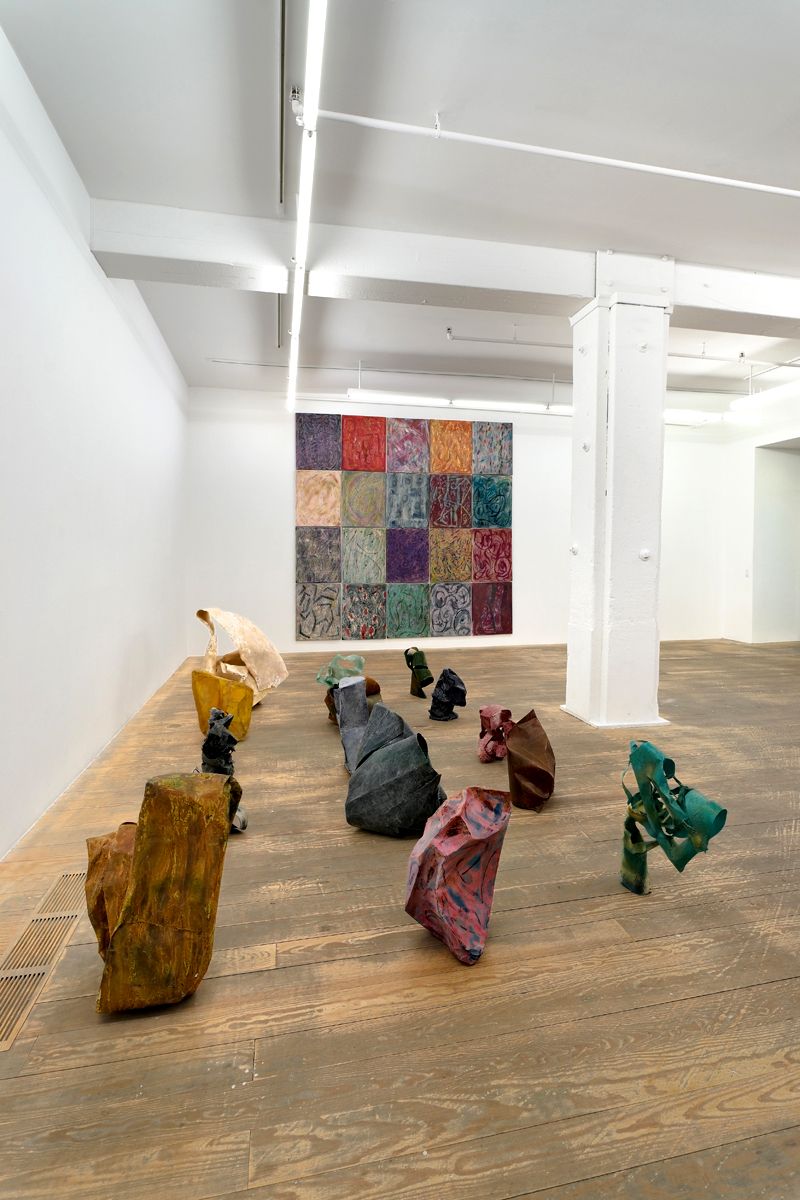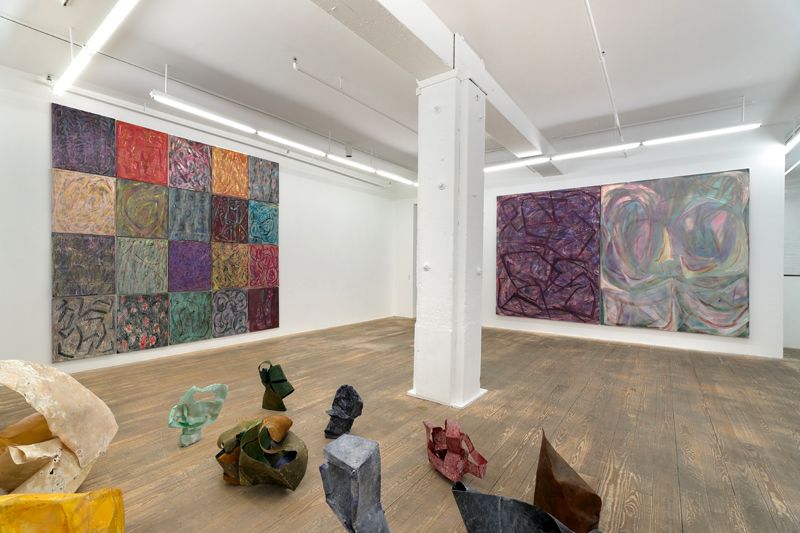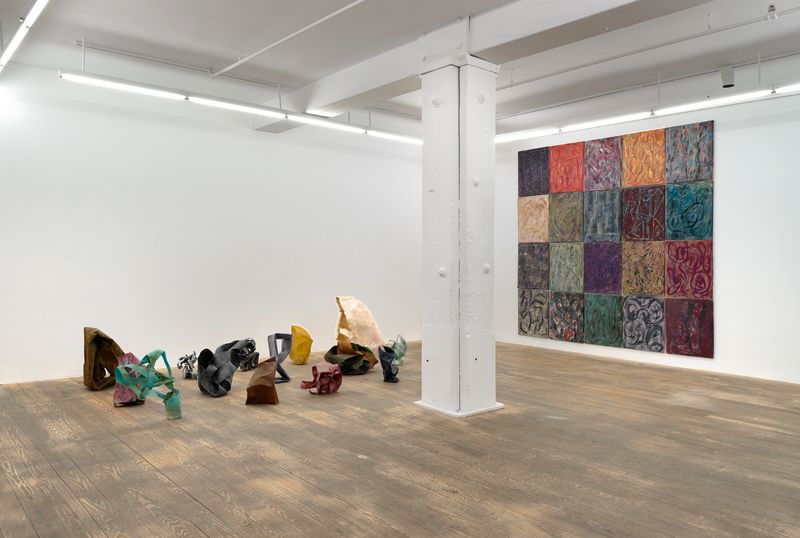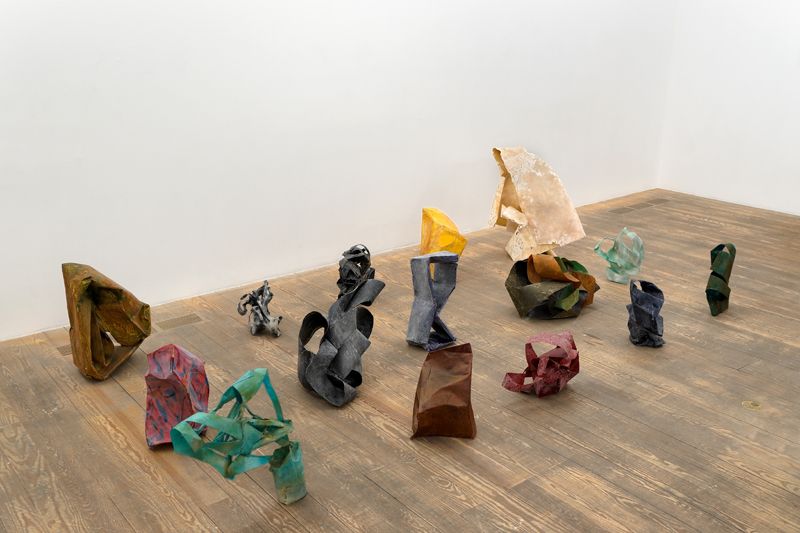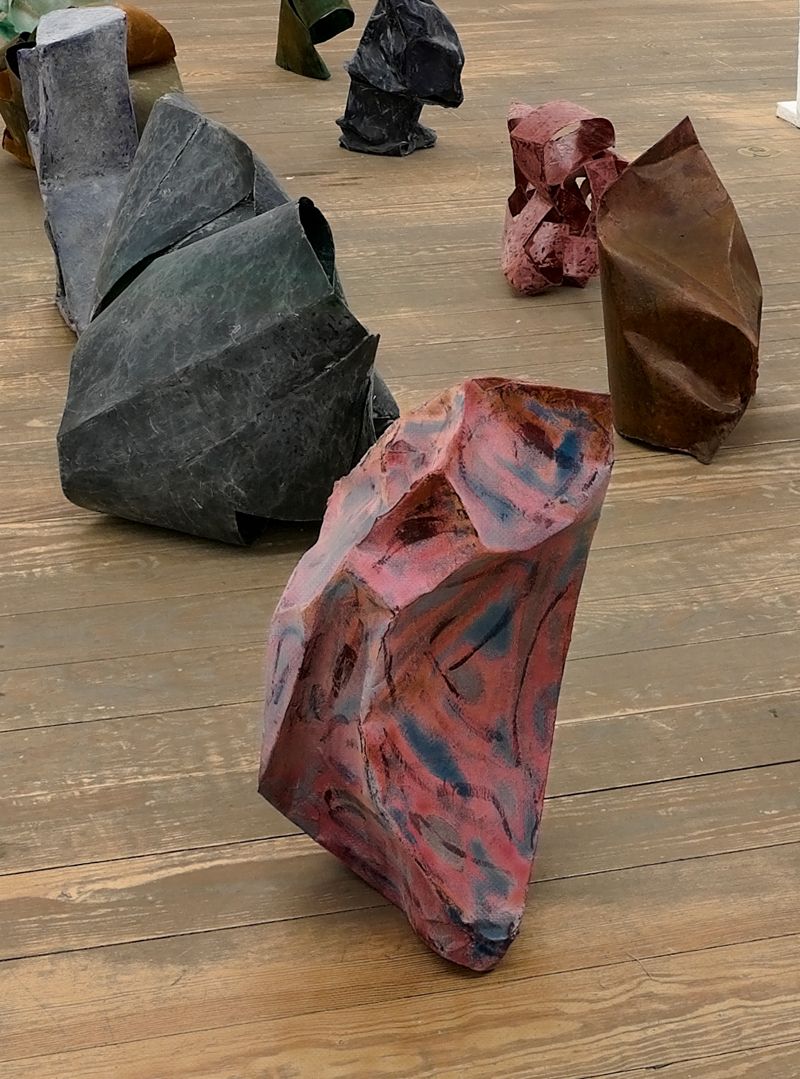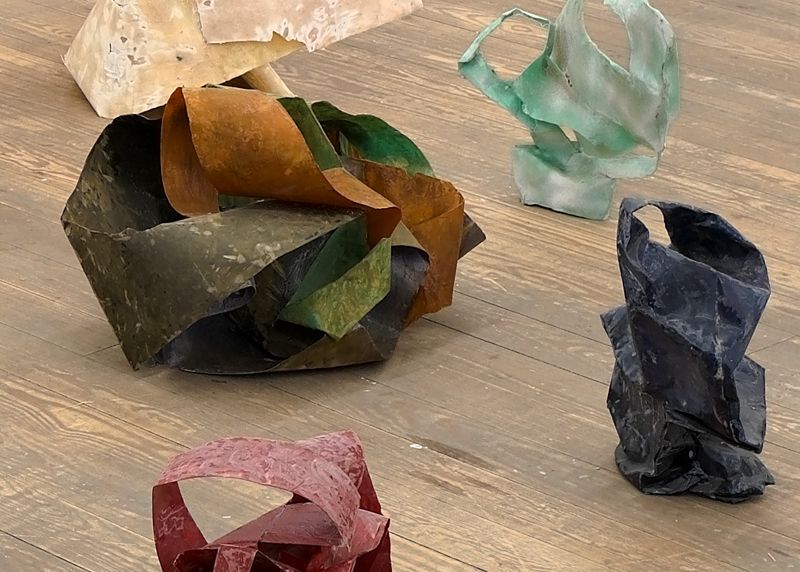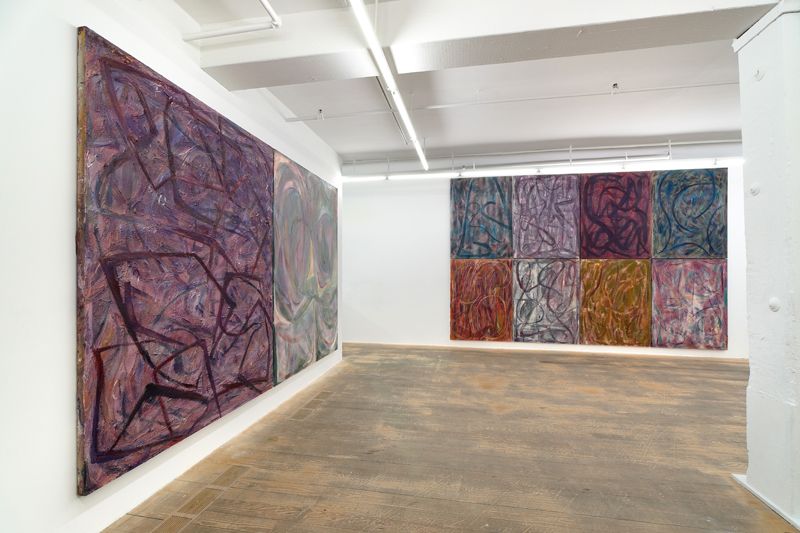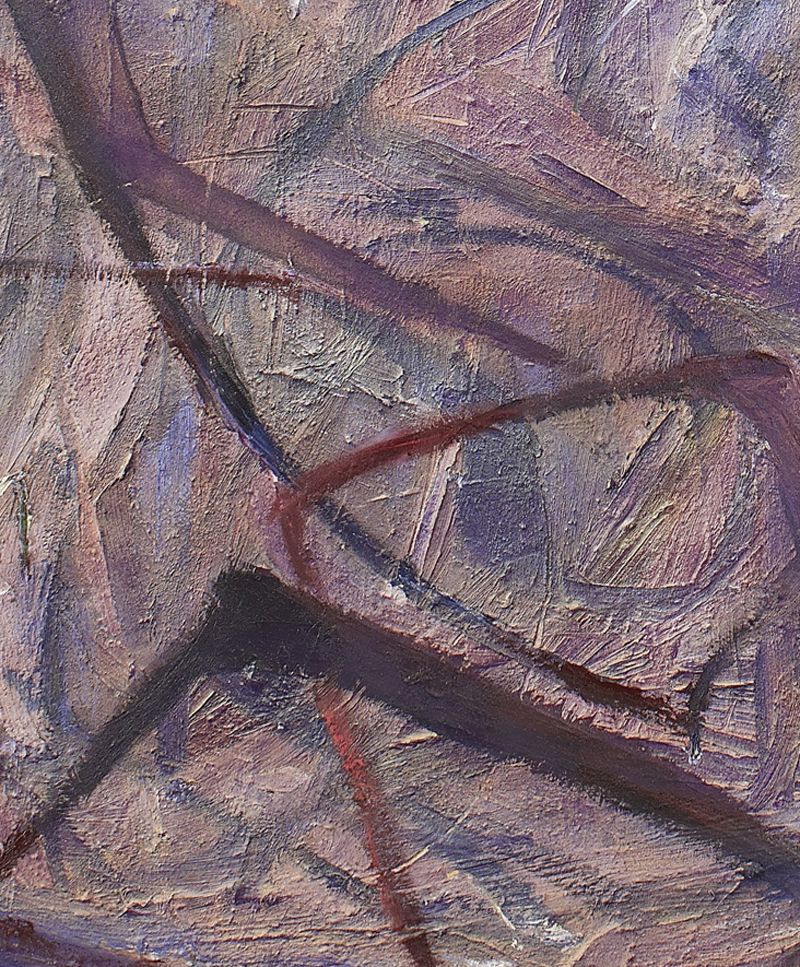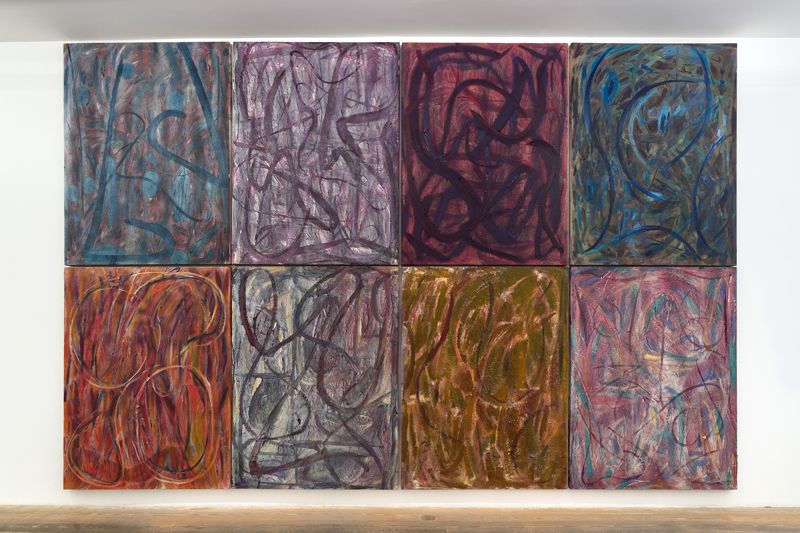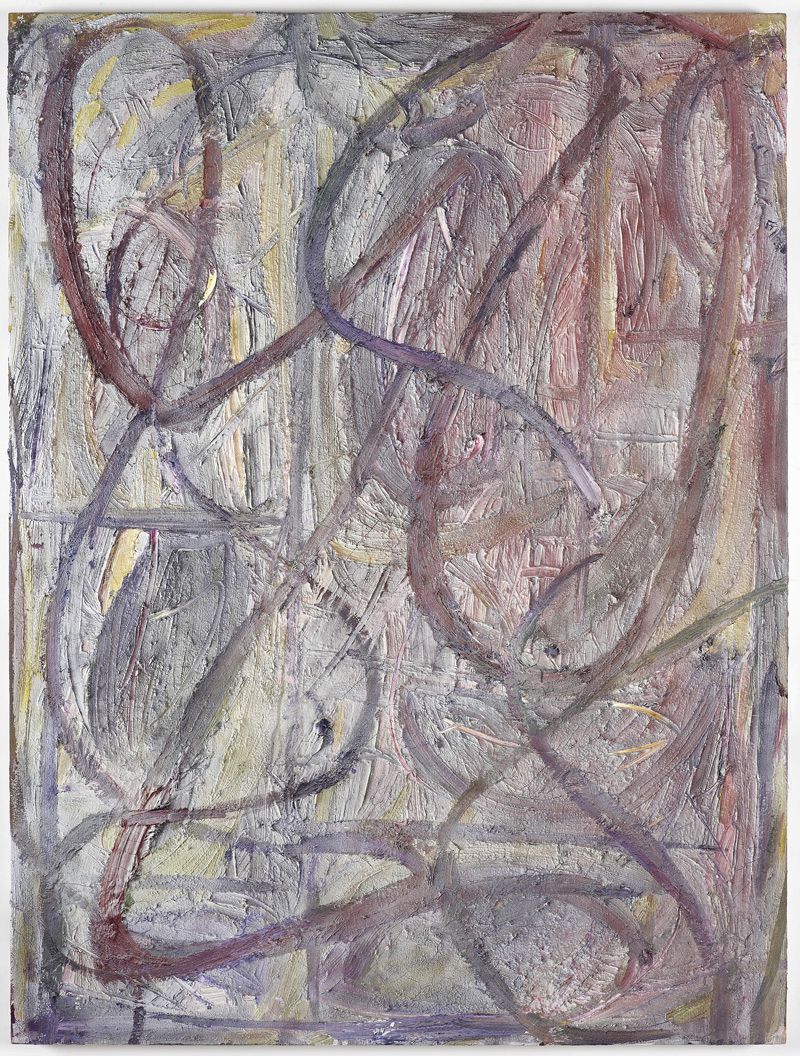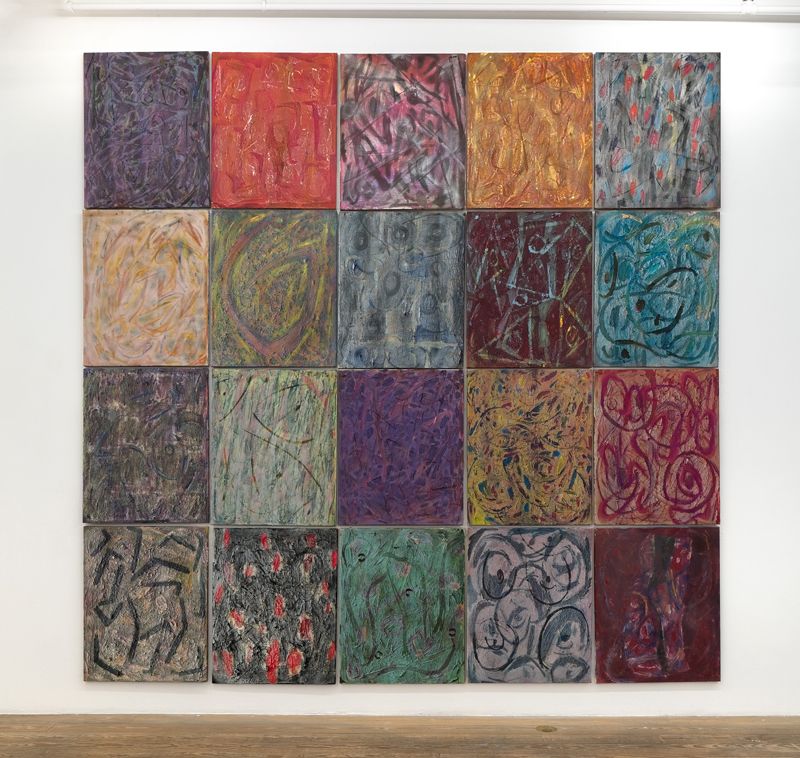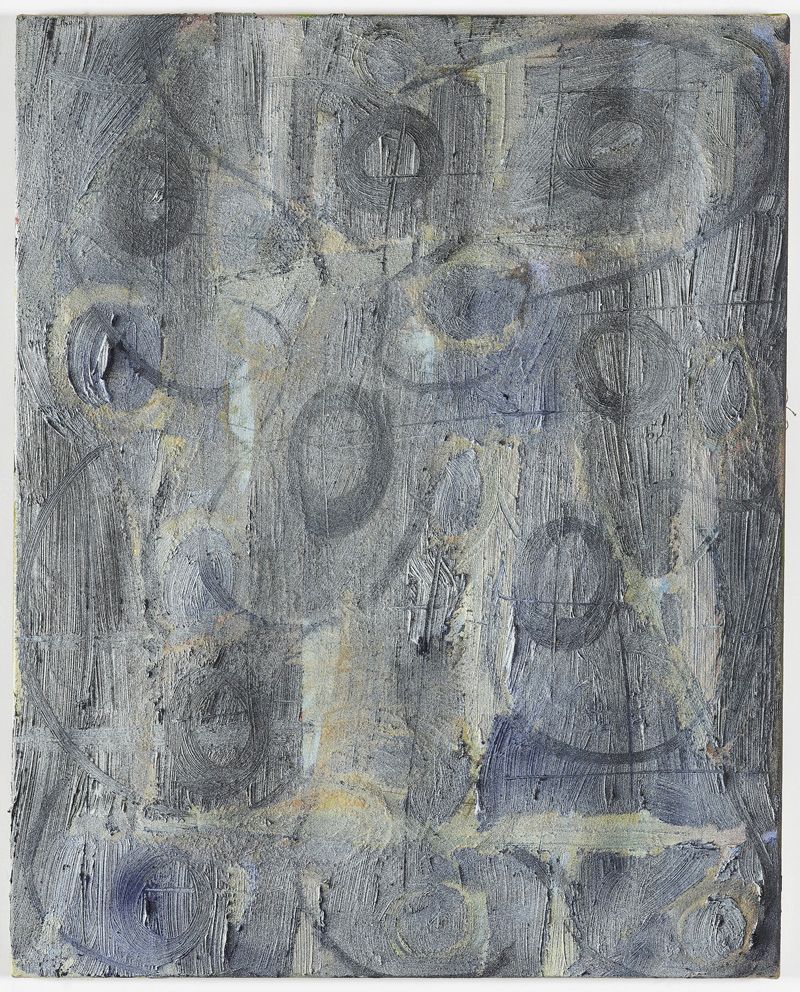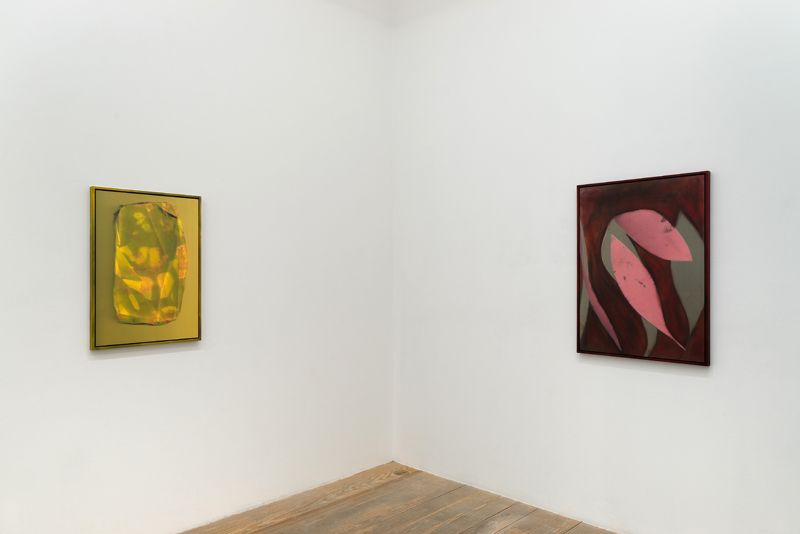TOTALED, Gabriel Hartley’s second solo exhibition at Foxy Production, comprises oil and spray-painted canvases of varying sizes hung in a grid, resin and paper sculptures across the gallery floor, and a room of unique prints.
The works’ titles, including Bald, Braid, Spritz, Tie, and Varicose, refer to cosmetic procedures and beauty products. They allude to the artist’s use of spray-paint as both a concealer and an enhancer. The spray-paint helps mask and flatten blemishes, scrapes, and marks in the surfaces of the paintings and sculptures, while, paradoxically, also highlighting them.
The different media in the exhibition play off one another; divisions among works at times blur. They share color, shape, perspective, and texture, yet within each work a whole string of other references emerge: from the bodily – noses, lips, breasts, figures, and eyes – to the art historical – Fautrier, Klee, and Picabia, among others.
Together, the paintings appear as wallpaper or panels that rise up from a floor of sculptures. They have a basic premise of loopy lines and grids of varying prominence. There is a moment on initially viewing them, when it is unclear how they were made, and what you are actually looking at: materials and subjects can seem elusive and changeable. One consistent subject, though, is light. Hartley seems to incorporate a history of light effects, from the evanescent radiance of Turner or Monet to the digital glow of computer generated imagery, into many of the works. Other paintings have such a smooth flatness that any light is dispersed across the canvas.
The sculptures are formed from color paper that is torn and folded, and then set in resin. Their surfaces are built up with paint and metal dust, and then, in almost as a form of assault, worn down with abrasions. Not unlike the work of the Futurist Boccioni, they strongly hint at identifiable forms, while simultaneously embracing the visual tropes of abstract sculpture. They mix the heaviness of metal with an ethereal quality: Some appear impossible, somehow able to stand on their own despite the pull of gravity.
The prints are made by crumpling up drawings, paintings, pieces of paper, or felt, scanning them, and then printing them on colored paper. Some are then torn and painted. This complex regime echoes the actions used in the production of the artist’s other media. The scanning process gives the works a spatial quality, as if the prints were a bridge between, or a subset of, the paintings and the sculptures. They recall digitizations of sculptures, or paintings transformed into three dimensions through desktop software.
Credits
Installation photography by Mark Woods.
